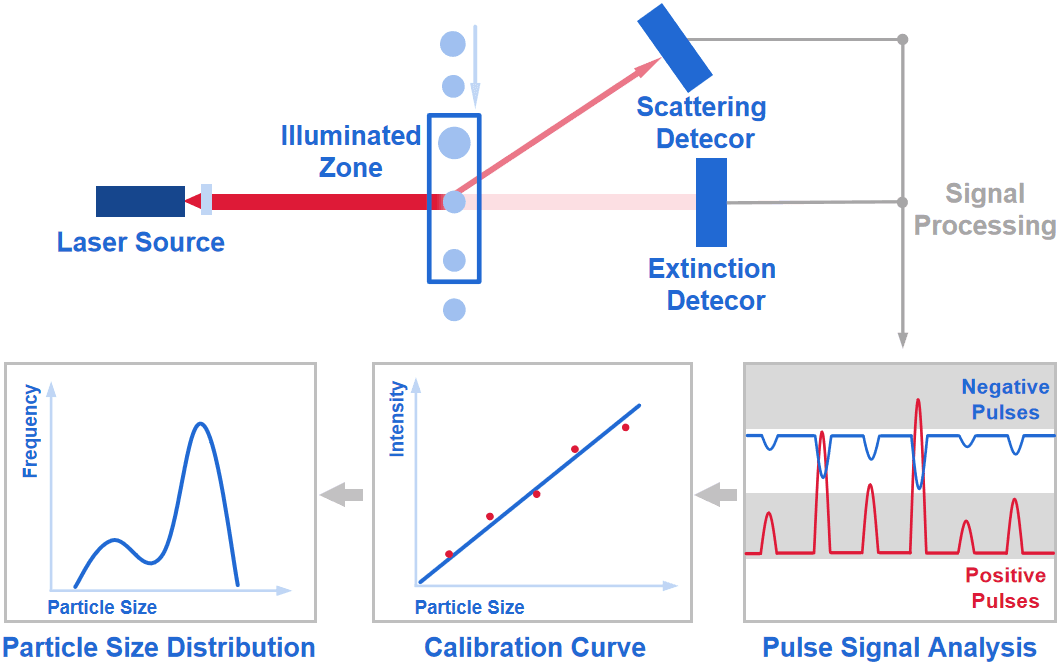How to calculate the number of particles and measure the particle size with an optical particle counter?
2023-05-03WIKI
Optical particle counting uses both light extinction and laser scattering techniques. The particles in the liquid will periodically interrupt the laser light as they pass through the measurement zone, which causes a shadow on the extinction detector when interupted, resulting in a change in current, and, therefore, a negative pulse. The number and strength of the negative pulses indicate the number of particles and their particle size distribution. For small particles, lower light extinction signals are created. When the particle size is smaller than 1μm, the extinction signals are too low to detect. In contrast, the laser light scattering method uses a detector to capture the scattered light. Laser light scattering works by monitoring the change in current caused by the particle interactions with the laser.
Particle counting starts with calculating the amount of the position where the positive and negative pulses simultaneously appear and overlap, which are caused by light scattering and light blockage. Suppose that only a positive or negative pulse signal is generated at a certain position in the signal diagram. Based on the threshold, the algorithm works here to determine whether the signal is treated as a noise or a valid signal. At the same time as particle counting, the pulse height of a single particle will be compared with the calibration curve to obtain the particle size, which is illustrated based on the pulse heights of a set of reference materials. In contrast to the laser diffraction particle size analysis, the particle size distribution yielded from the optical particle counter depends on the calibration curve instead of the inverse algorithm.





